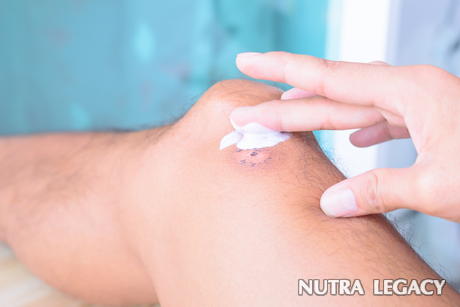All You Need to Know about Hypertrophic Scar Treatment

- Hypertrophic and keloid scars are more visible than other scars and more difficult to get rid of
- Steroid injections and laser scar treatment are some of the less invasive treatment methods for these scars
- Surgery is recommended for resistant scars
- The use of silicone sheets to treat these scars is another, newer option to consider
No one wants to have visible scars. However, some scars are much easier to deal with than others. For example, some shallow scars can be treated easily with procedures such as chemical peels. However, that would those same options would not be effective hypertrophic scar treatment choices. The good news is there are methods of dealing with these types of scars.
What is Hypertrophic Scar?
The hypertrophic scar and the similar keloid scar are raised areas on the skin at the site of some type of wound. Keloid scars are normally very large, reddish areas that occur when the body continues making new deposits to repair the skin even after the healing is finished. These scars are more common with darker skin and are often accompanied by other symptoms, such as itchiness and redness. Hypertrophic scars look very much the same but are common among all skin types and sometimes will go away on their own. Because both types of scars are raised, pigmented, and large, they are the very types of scars people want to get rid of the most.
Possible Hypertrophic Scar Treatment Possibilities
The most standard treatment for these types of scars is the injection of steroids directly into the scar. Every four to six weeks, patients receive another injection. After several treatments, the scar should become noticeably smaller and lighter in color. This can be a very slow healing process but thankfully side effects from the steroids are minimal. Collagen injections can sometimes be used instead to puff out the surrounding tissue so the scar is less noticeable but those injections need to be repeated for the life of the scar to maintain results.
One of the newest methods of hypertrophic or keloid scar treatment involves what is known as a pulsed dye laser. This type of laser beam is applied to the scar and its surrounding area repeatedly for several weeks. Eventually, the scar will begin to be destroyed by the laser which will leave some bruising and bleeding in the area. However the treatment is not painful and does not require as much down time as surgery, which is another treatment option.
A dermatologist may recommend surgery for hypertrophic and keloid scars that do not respond to the treatments described above. In both cases, the patients are placed under anesthetic and the entire scar is removed along with tissue from the area. To promote proper healing and to prevent the formation of more of these scars in the same area a silicone sheet is sometimes placed on the site.
Silicone Scar Removal
One of the other methods of treating these scars is through the use of silicone products. Sheets of silicone can now be purchased in stores or through a prescription. The sheet is placed over the scar and applies pressure to the area. The pressure causes the scar to eventually reduce in size. While these products work best with newer scars, they have been effective in treating older ones as well. Consider discussing this option with your dermatologist before trying any of the other medications or surgical hypertrophic scar treatment possibilities.
The information supplied in this article is not to be considered as medical advice and is for educational purposes only.
|
| ||||||||||||||





 6 Feb 2009
6 Feb 2009